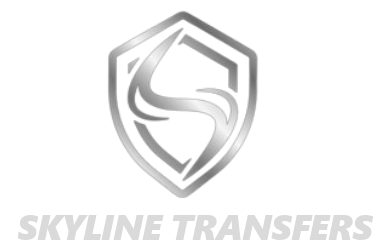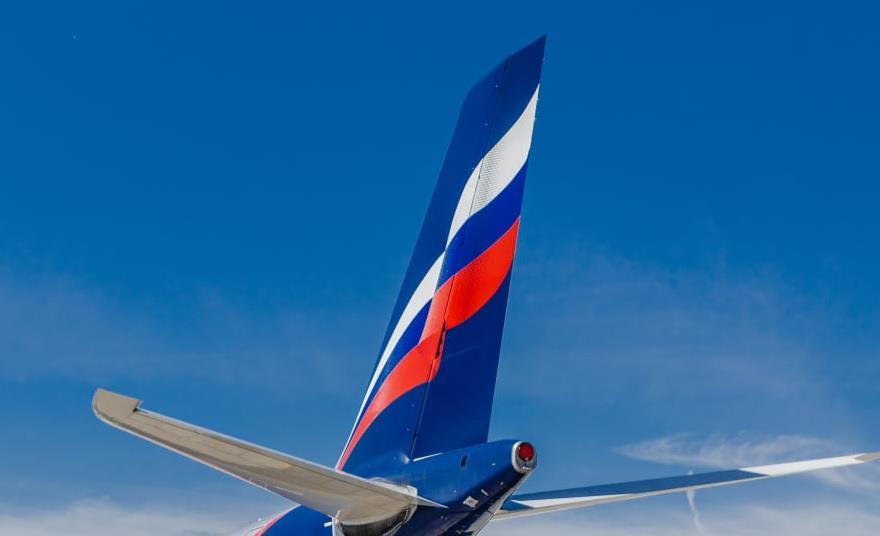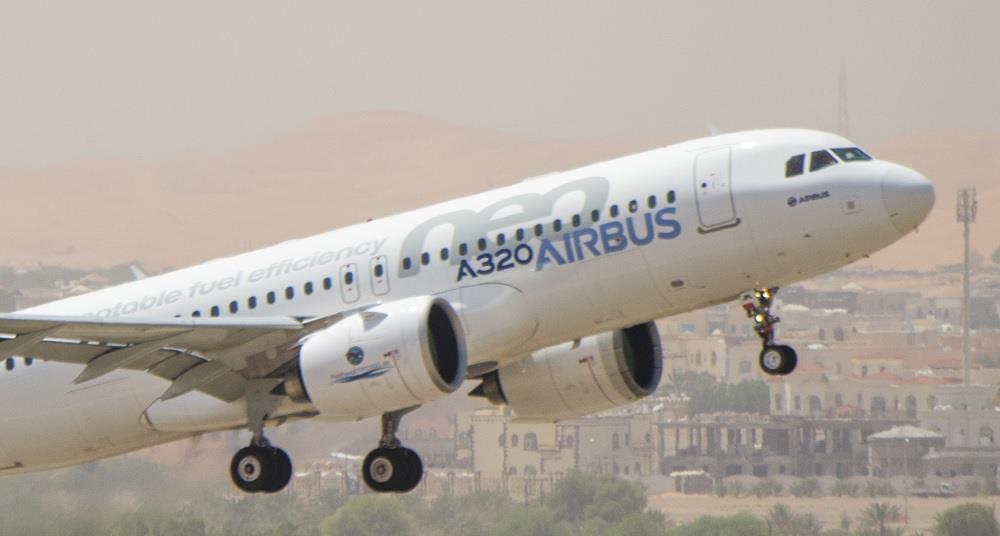The US Department of Transportation (DOT) has tentatively awarded 10 hotly contested slots for long-distance domestic flights out of Ronald Reagan National airport in Washington, DC.
The DOT’s preliminary decisions, revealed in a 16 October regulatory filing, award slots to five US airlines proposing flights to destinations beyond Reagan airport’s 1,086nm (2,012km) perimeter:
The slots are being awarded as part of the Federal Aviation Administration’s Modernization and Reauthorization Act of 2024, signed into law by US President Joe Biden in May.
The DOT requested on 24 June applications for the 10 slot exemptions, with airlines asked to demonstrate how their proposals would “enhance options for nonstop travel to beyond-perimeter airports that do not have nonstop service” from Reagan airport, as well as “have a positive impact on the overall level of competition in the markets that will be served”.
Spurned by the tentative decision is JetBlue Airways, which had requested permission to establish a second daily nonstop flight between Washington, DC and Luis Munoz Marin International airport in San Juan, Puerto Rico; Frontier Airlines, which had proposed the same route as JetBlue; and Spirit Airlines, which had proposed to fly between Reagan airport and San Jose Mineta International airport in the California Bay Area.
The process has been fierce, with each airline’s proposal facing protestations from competing carriers. In each case, the routes could launch as soon as 90 days following the DOT’s final ruling – meaning they could begin early in 2025.
ALASKA TO SAN DIEGO
Alaska argued in its application that San Diego represents the largest US market beyond the 1,086nm boundary that does not have nonstop service from Reagan airport, and is also home to the largest community of military personnel in the USA.
Frontier, JetBlue and Spirit all protested Alaska’s application, but the DOT finds that Alaska “does not have a dominant position” at Reagan airport, while fares from Reagan to San Diego are 30% higher than average fares in Washington, DC.
“These factors combined persuade the department to tentatively conclude that Alaska’s service would have a positive impact on the overall level of competition” in the Reagan-to-San Diego market.
Alaska says the DOT’s decision ”brings us one step closer to offering the only nonstop service between these two major markets. Alaska urges DOT to finalise the selection of our application to serve San Diego as soon as possible”.
Alaska plans to fly the route with 159-seat Boeing 737-800s or 737 Max 8s.
AMERICAN TO SAN ANTONIO
American’s plan to operate flights to San Antonio using Airbus A321s would tap into the second-largest US market that currently lacks service from Reagan airport, behind San Diego.
The carrier argued that San Antonio is among the fastest-growing cities in the USA, also citing its high concentration of military activity.
While multiple carriers asserted that American holds the “dominant share of allocated slots and slot exemptions” at Ronald Reagan, the DOT says it was not persuaded by those arguments.
“The primary reason for this tentative conclusion is that American’s application is one of only two from eligible carriers that proposes new service to an unserved, beyond-perimeter market” from Ronald Reagan, the department says. It also notes that American “does not presently carry a majority share of customers” travelling between Ronald Reagan and San Antonio.
“The proposed service will enhance options for travel to a beyond-perimeter airport that does presently have service,” the DOT states.
DELTA TO SEATTLE
Delta, which has been seeking to establish a greater foothold at its hub in Seattle, effectively argued that its proposed service with 194-seat A321neos from Reagan airport would “provide new capacity in a high-demand, beyond-perimeter market, while also offering consumers an alternative to the dominant, sole carrier on the route”, says the DOT, referring to Alaska.
JetBlue and Southwest argued against Delta’s application, with JetBlue asserting that Delta’s proposed route “may result in a reduction of service to Seattle from other Washington-area airports”.
“JetBlue and Southwest state that Delta customers can presently access Seattle via service connecting over other Delta hubs, and that Delta’s air fares are typically higher than others in the markets it serves,” the DOT says.
Southwest also argued that ”there is presently a surplus of seats” in the Reagan-to-Seattle market, contrary to Delta’s assessment of strong passenger demand for the route.
However, the DOT was persuaded by Delta’s arguments because the proposed route is currently served by a single carrier – Alaska – and because air fares are “notably higher” than the average in the Washington, DC market.
Delta may choose to instead establish a second daily nonstop flight to Salt Lake City, Utah.
SOUTHWEST TO LAS VEGAS
The DOT finds that the Reagan-to-Las Vegas market ”has the greatest discrepancy between annual passengers and available nonstop seats of any market proposed in this proceeding”.
“Put simply, the current market… is roughly two times larger than the available nonstop capacity,” the department says. Southwest’s proposed service on the route would “enhance competition” with American, which currently operates daily flights between Reagan airport and Las Vegas.
While Southwest carries the second-most passengers between the two markets, it currently does not offer a nonstop option. Further, air fares to Las Vegas are nearly 30% higher than average in Washington, DC.
“These factors suggest that new nonstop service between [Reagan airport and Las Vegas] would have a positive impact on the overall level of competition in the market by providing a nonstop alternative to service currently operated by the dominant carrier,” the DOT finds.
While Southwest’s proposal was opposed by United and JetBlue, the DOT notes that Delta commented in support of the route.
UNITED TO SAN FRANCISCO
Currently, both United and Alaska operate daily nonstop flights between San Francisco and Reagan airport. United carries about 36% and Alaska carries about 35% of the 400 daily passengers who make the trip.
“Multiple other applicants state that United already serves [Reagan airport to San Francisco], and therefore its proposal would not enhance competition on the route,” the DOT says.
Delta argued that approving United’s proposal would “further strengthen United’s dominance” in the Washington, DC, market and negatively affect competition.
And JetBlue filed a motion, supported by Southwest, to disqualify United from consideration, based on United proposing a departure time “outside of hours when slot exemptions may be allocated”.
However, the DOT was persuaded by the “prospective addition of newly accessible one-stop connecting markets” from Reagan airport – including ”32 new round-trip, one-stop connections… via San Francisco, including seven international connections to points in Asia”.
“While the availability of new connecting points is, in part, dependant on United’s operating schedule for the proposed service, the department believes it is likely that new time-of-day coverage… would enable added one-stop connections that will benefit consumers in the Washington, DC-San Francisco market,” the DOT finds.
If it receives final approval, United plans to launch flights on the route using 737 Max 8 jets configured with 166 seats.
![]() Beaphoenix WebDesign ltd
Beaphoenix WebDesign ltd


The US Department of Transportation (DOT) has tentatively awarded 10 hotly contested slots for long-distance domestic flights out of Ronald Reagan National airport in Washington, DC.
The DOT’s preliminary decisions, revealed in a 16 October regulatory filing, award slots to five US airlines proposing flights to destinations beyond Reagan airport’s 1,086nm (2,012km) perimeter:
The slots are being awarded as part of the Federal Aviation Administration’s Modernization and Reauthorization Act of 2024, signed into law by US President Joe Biden in May.
The DOT requested on 24 June applications for the 10 slot exemptions, with airlines asked to demonstrate how their proposals would “enhance options for nonstop travel to beyond-perimeter airports that do not have nonstop service” from Reagan airport, as well as “have a positive impact on the overall level of competition in the markets that will be served”.
Spurned by the tentative decision is JetBlue Airways, which had requested permission to establish a second daily nonstop flight between Washington, DC and Luis Munoz Marin International airport in San Juan, Puerto Rico; Frontier Airlines, which had proposed the same route as JetBlue; and Spirit Airlines, which had proposed to fly between Reagan airport and San Jose Mineta International airport in the California Bay Area.
The process has been fierce, with each airline’s proposal facing protestations from competing carriers. In each case, the routes could launch as soon as 90 days following the DOT’s final ruling – meaning they could begin early in 2025.
ALASKA TO SAN DIEGO
Alaska argued in its application that San Diego represents the largest US market beyond the 1,086nm boundary that does not have nonstop service from Reagan airport, and is also home to the largest community of military personnel in the USA.
Frontier, JetBlue and Spirit all protested Alaska’s application, but the DOT finds that Alaska “does not have a dominant position” at Reagan airport, while fares from Reagan to San Diego are 30% higher than average fares in Washington, DC.
“These factors combined persuade the department to tentatively conclude that Alaska’s service would have a positive impact on the overall level of competition” in the Reagan-to-San Diego market.
Alaska says the DOT’s decision ”brings us one step closer to offering the only nonstop service between these two major markets. Alaska urges DOT to finalise the selection of our application to serve San Diego as soon as possible”.
Alaska plans to fly the route with 159-seat Boeing 737-800s or 737 Max 8s.
AMERICAN TO SAN ANTONIO
American’s plan to operate flights to San Antonio using Airbus A321s would tap into the second-largest US market that currently lacks service from Reagan airport, behind San Diego.
The carrier argued that San Antonio is among the fastest-growing cities in the USA, also citing its high concentration of military activity.
While multiple carriers asserted that American holds the “dominant share of allocated slots and slot exemptions” at Ronald Reagan, the DOT says it was not persuaded by those arguments.
“The primary reason for this tentative conclusion is that American’s application is one of only two from eligible carriers that proposes new service to an unserved, beyond-perimeter market” from Ronald Reagan, the department says. It also notes that American “does not presently carry a majority share of customers” travelling between Ronald Reagan and San Antonio.
“The proposed service will enhance options for travel to a beyond-perimeter airport that does presently have service,” the DOT states.
DELTA TO SEATTLE
Delta, which has been seeking to establish a greater foothold at its hub in Seattle, effectively argued that its proposed service with 194-seat A321neos from Reagan airport would “provide new capacity in a high-demand, beyond-perimeter market, while also offering consumers an alternative to the dominant, sole carrier on the route”, says the DOT, referring to Alaska.
JetBlue and Southwest argued against Delta’s application, with JetBlue asserting that Delta’s proposed route “may result in a reduction of service to Seattle from other Washington-area airports”.
“JetBlue and Southwest state that Delta customers can presently access Seattle via service connecting over other Delta hubs, and that Delta’s air fares are typically higher than others in the markets it serves,” the DOT says.
Southwest also argued that ”there is presently a surplus of seats” in the Reagan-to-Seattle market, contrary to Delta’s assessment of strong passenger demand for the route.
However, the DOT was persuaded by Delta’s arguments because the proposed route is currently served by a single carrier – Alaska – and because air fares are “notably higher” than the average in the Washington, DC market.
Delta may choose to instead establish a second daily nonstop flight to Salt Lake City, Utah.
SOUTHWEST TO LAS VEGAS
The DOT finds that the Reagan-to-Las Vegas market ”has the greatest discrepancy between annual passengers and available nonstop seats of any market proposed in this proceeding”.
“Put simply, the current market… is roughly two times larger than the available nonstop capacity,” the department says. Southwest’s proposed service on the route would “enhance competition” with American, which currently operates daily flights between Reagan airport and Las Vegas.
While Southwest carries the second-most passengers between the two markets, it currently does not offer a nonstop option. Further, air fares to Las Vegas are nearly 30% higher than average in Washington, DC.
“These factors suggest that new nonstop service between [Reagan airport and Las Vegas] would have a positive impact on the overall level of competition in the market by providing a nonstop alternative to service currently operated by the dominant carrier,” the DOT finds.
While Southwest’s proposal was opposed by United and JetBlue, the DOT notes that Delta commented in support of the route.
UNITED TO SAN FRANCISCO
Currently, both United and Alaska operate daily nonstop flights between San Francisco and Reagan airport. United carries about 36% and Alaska carries about 35% of the 400 daily passengers who make the trip.
“Multiple other applicants state that United already serves [Reagan airport to San Francisco], and therefore its proposal would not enhance competition on the route,” the DOT says.
Delta argued that approving United’s proposal would “further strengthen United’s dominance” in the Washington, DC, market and negatively affect competition.
And JetBlue filed a motion, supported by Southwest, to disqualify United from consideration, based on United proposing a departure time “outside of hours when slot exemptions may be allocated”.
However, the DOT was persuaded by the “prospective addition of newly accessible one-stop connecting markets” from Reagan airport – including ”32 new round-trip, one-stop connections… via San Francisco, including seven international connections to points in Asia”.
“While the availability of new connecting points is, in part, dependant on United’s operating schedule for the proposed service, the department believes it is likely that new time-of-day coverage… would enable added one-stop connections that will benefit consumers in the Washington, DC-San Francisco market,” the DOT finds.
If it receives final approval, United plans to launch flights on the route using 737 Max 8 jets configured with 166 seats.
Source link
Share This:
admin
Plan the perfect NYC Memorial Day weekend
Pack only what you need and avoid overpacking to streamline the check-in and security screening…
LA’s worst traffic areas and how to avoid them
Consider using alternative routes, such as Sepulveda Boulevard, which runs parallel to the 405 in…
Aeroflot Group discloses acquisition of 747 and 737 freighters
Aeroflot Group has disclosed that eight aircraft – including freighters – have been introduced to…
Airbus cuts full-year delivery target by 30 aircraft
Airbus has cut its full-year delivery target to 790 commercial aircraft, down from the original…
Hi Fly claims Antarctic first with A330 follow-up to A340 landing
Portuguese wet-lease specialist Hi Fly has flown an Airbus A330-300 to Antarctica, claiming a first…
Austria to field 12-strong Leonardo M-346FA fleet from 2028 under $1.75 billion deal
Austria has finalised a roughly €1.5 billion ($1.75 billion) deal that will lead to its…
Avincis and DHC partner on CL-series waterbomber support
Aerial services provider Avincis is to collaborate with De Havilland Canada (DHC) on a series…
MBDA Meteor missile integration nears flight-test phase with Lockheed Martin’s stealthy F-35A
MBDA’s Meteor beyond-visual-range air-to-air missile has moved a step closer to commencing flight trials with…
Jekta hydrogen-electric amphibian aircraft scale model testing begins January 2024
Swiss start-up Jekta plans next month to begin flight testing a scale model of the…
Sikorsky S-92 engine failure caused by maintenance lapse, Norwegian investigators find
Norwegian investigators believe an unspecified maintenance issue was the likely cause of an in-flight engine…
PD-8 engine tested for performance in torrential rain
United Engine has carried out further water-ingestion tests on the PD-8 engine for the Yakovlev…
Leisure carrier Marabu expands fleet to a dozen A320neos
Estonian carrier Marabu Airlines is expanding its fleet of Airbus A320neos through a lease with…